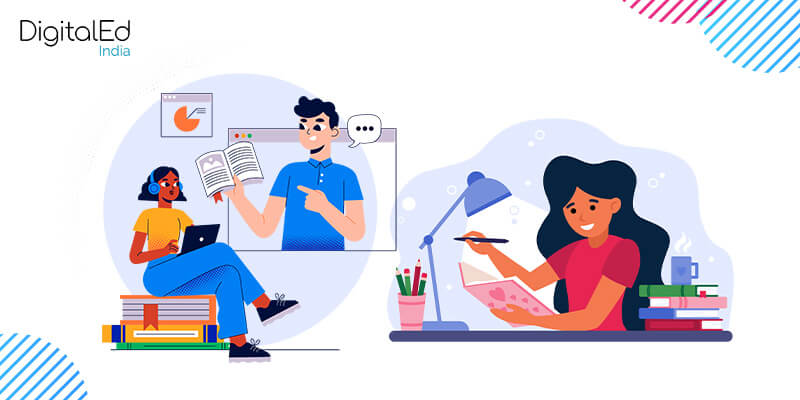Blended learning vs flipped classroom – What’s the difference?
There are many differences between a flipped classroom and a blended learning model; a teacher needs to understand each to best use one in their classroom. While both models have their benefits, a flipped classroom is more complex to implement. A flipped classroom requires a more balanced approach between in-class and online work, and it’s more difficult to measure outcomes based on student responses. The flipped classroom method relies on peer instruction, negatively impacting other students. The model requires an educator who keeps a course exciting and absorbing.

This article will explore the difference between flipped classrooms and blended learning models. Both approaches have many benefits, and both may be worth exploring. To truly understand the differences between these two types of learning, you should first familiarize yourself with the methods.
When to Implement Blended Learning?
In-School Environment
When to implement blended learning? It depends on the type of school and student body. Smaller classes give students one-on-one attention and help create a communal environment, making the online component less valuable. If you’re teaching a rural class, you may not have reliable technology and may want to avoid the blended learning tool. Older students and workers may need more time to learn how to use the program and be more frustrated than the instructor.
When implementing a new blended learning model, the most important thing is to make sure you’ve done the research. Regardless of how many students you’ve taught, you can ensure that your students get the most out of this new method. While it may sound like it’s the best option, it can also place more pressure on your faculty and organization. When implementing a blended learning program, you should take the following steps to ensure it works as intended.
In Higher Education Settings
There are many advantages to implementing blended learning in your school, including flexibility and improved learning outcomes. This type of learning is best for busy students who have long commutes. By reducing the time students spend in class, they can focus more on individual assignments and questions. In addition, this method can save money since fewer resources are needed for a hybrid course. But it is essential to consider the potential for success when implementing blended learning.
When to implement blended learning in your classroom? First, make sure that your students have access to the necessary technology. Ensure that they have resources that will help them succeed in the course. Once the students are comfortable with the technology, you can plan the content and the due dates. While flexible work schedules are great, be sure to set deadlines and expectations to know how to complete their assignments. Once you’ve done that, it’s time to decide when to implement blended learning.
When to Implement Flipped Learning
Flipping a class does not mean implementing it all at once. Instead, it should be a gradual process. You don’t want to overwhelm students and teachers. Slow and steady wins the race. Here are some things to consider before implementing this new teaching method. Here are some benefits of flipped classrooms. Is it right for you? How will it affect your teaching? Let’s find out. Also, remember that students can get overwhelmed with a new teaching style.
One of the most compelling benefits of a flipped class is active engagement. When implemented correctly, flipped classes can help students understand the materials. In addition, students are more likely to collaborate, and the time invested in completing the digital content is well worth it.
If you have a class with a low-performing student population, you can still make the best use of technology. The flipped classroom model allows you to create an entirely new classroom experience to make your students learn faster and retain more information. Using a combination of traditional and online methods, a flipped class can be an effective solution for any classroom.
Use flipped classrooms to improve your students’ learning. There are many benefits to implementing a flipped classroom, including more active engagement and more meaningful assignments. Often, flipped classes will result in greater collaboration and active engagement. And it is worth noting that the flipped approach can make your students more engaged in their work. The best way to evaluate this is to set the learning objectives for each student. In this way, you’ll make sure the students are learning effectively.
Flipped Learning vs. Blended Learning: Differences
Blended learning and flipped classrooms are two distinct approaches to teaching. The blended learning is more traditional, while the flipped class is more digital. While a blended learning model uses both, a flipped classroom still involves face-to-face interaction with students. A combined approach allows teachers to dedicate a large portion of the classroom time to high-value instructional time, allowing them to spend more class time on high-order learning activities.
The key differences between a flipped classroom and a blended learning model are not fundamental to making one superior to the other. Both methods can be effective, and each method has advantages and disadvantages. The best approach depends on your goals and the type of student you teach. Whether you choose flipped learning or a blended system, both will help your students achieve their goals. It’s up to you to decide which way is right for your students.
One Reply to “Blended learning vs flipped classroom – What’s the difference?”
Couldn’t understand the difference